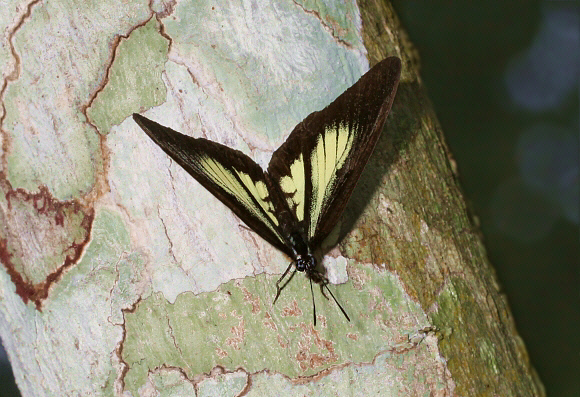
Introduction
The genus Mesoxantha comprises of a single species – ethosea. It is a strange butterfly, unique in appearance, and is so atypical for a Nymphalid that it was once considered to be a member of the Lipteninae ( Lycaenidae ). It has now for a long time been realised that it is actually a member of the Biblidinae – a group of butterflies with over 350 species worldwide, the vast majority of which are Neotropical. In the Afrotropical region there 30 species, in the genera Byblia, Ariadne, Eurytela, Neptidopsis, Sevenia and Mesoxantha.
Mesoxantha ethosea is a largely west African species, found from Sierra Leone to Cameroon and western Uganda.
Habitats
This species is found in primary and mildly degraded rainforest habitats, at altitudes between about 100-800m.
Lifecycle
The larval foodplant is Tragia ( Euphorbiaceae ).
Adult behaviour
Males can be found in two’s and three’s flying around favoured trees, usually on hilltops or ridges. They often perch on narrow branches, in a head downward posture, with their wings half open; or sometimes on foliage, to await passing females.
Males frequently intrude into each other’s territory, and when this happens an aerial skirmish takes place, during which both butterflies make a long series of clearly audible clicking sounds. This is presumably their way of shouting “go away”.
To my knowledge the only other species which behave in a similar manner are the Hamadryas Cracker butterflies of Central and South America. In Hamadryas the sound is produced as the butterflies take off, and is made by twanging a pair of spiny rods at the tip of the abdomen against bristles on the valvae ( the male’s anal claspers ). Only males can produce the sound, but both sexes can detect it – their wings have tiny hollow cells covered in membranes which vibrate in response to sound and stimulate nerve endings. The purpose of the sound is not fully understood : it may deter competing males from occupying the same territory, and may also act as a trigger to initiate the first response from a female during courtship.
